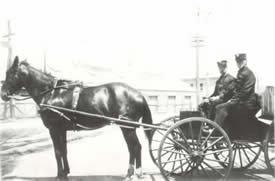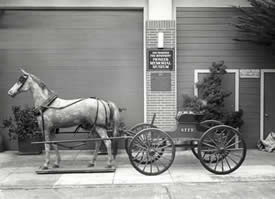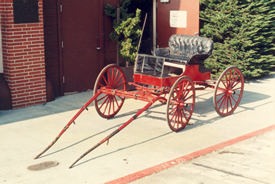
- Guardians Home
- SFFD Home
- Site Map
- Historical Review
- Apparatus
- Chiefs of Department
- Chronology
- Charles H. Ackerson
- Charles J. Brennan
- Keith P. Calden
- Andrew C. Casper
- Emmet C. Condon
- Robert L. Demmons
- John H. Dougherty
- Charles P. Duane
- Joanne M. Hayes-White
- George H. Hossefross
- Francis P. Kelly
- Frederick D. Kohler
- Joseph A. Medina
- Thomas R. Murphy
- William F. Murray
- Jeanine Nicholson
- Edward J. Phipps
- David Scannell
- Patrick H. Shaughnessy
- Albert J. Sullivan
- Dennis T. Sullivan
- Paul J. Tabacco
- Mario H. Trevino
- Edward P. Walsh
- Franklin E. R. Whitney
- Companies
- Events
- Past Events
- SFFD 150th Anniversary
- PPIE 100th Anniversary
- 1906 Expo
- 1989 Quake Party - 2009
- 65' Ladder Presentations
- Broderick & Terry Duel
- Coit Tower 75th Anniversary
- Cole Valley Fair
- Gold Hydrant - April 18th
- Jimmy's Car Show
- Lower Haight Street Fair
- Lotta's Fountain - April 18th
- Musters
- Presidio Car Show
- Station 28 75th Anniversary
- Fireboats
- Firehorses
- Firehouses
- Fires
- In The Line Of Duty
- Museum Collections
- Musters
- Notable People
- Organizations
- Gift Shop
- Volunteers
- Related Links
- Contact Us
- Research Requests
- Photo Gallery
- Videos
- Donations
Museum Collections: Apparatus - 1892 Chief's Buggy: |
|
1892 Waterhouse & Lester, San Francisco, single horse drawn runabout |
|
 |
 |
 |
|
Builder: Waterhouse & Lester, San Francisco Location: Headquarters lobby Condition: Very good, restored Crew: 2 - Chief and Chief's Operator Service History: This single horse drawn carriage was used by a chief and his operator, who was the driver, to respond to alarms and for routine daily duties. There are no markings on this unit that show in which district, battalion or division the buggy served. The buggy was retired from service between 1903 and 1921. Those were the years that the Department made the change over from horse drawn chief's buggies to motorized units. The first motorized unit in the Department was a 1903 electric powered chief's buggy. Once at the site of an alarm it was the chief's operator's duty to transmit his chief's orders to the fire alarm office by using the Department telegraph system. Each street fire alarm box contained a telegraph key for this purpose. There was a complete signal code to cover every fire ground situation of the Department. The normal use of the telegraph system was to request a greater alarm of fire or to special call a specific unit, or to call additional units of equipment to their location. If the box alarm was a false alarm, the chief would cancel the alarm and the operator would telegraph this notice to the fire alarm office. Then the chief and operator would have to wait at the alarm box to signal to all of the responding units that the box was false and that they should return to quarters. These responding companies remained out of service until they returned to their firehouse. Then the officer of each company would telegraph, and in later years telephone, the fire alarm office to place his company back into service. This was the Department practice until 1948 when a program was started to place fixed radios on each apparatus. The fixed radio program was completed in 1954. When the radios were on the apparatus, it freed the operator from using the alarm box telegraph system. The operator forwarded the chief's instructions to the central fire alarm station from the radio of the closest engine or truck. It is Department policy to park a buggy away from the front of a fire building so it would not interfere with the movement of firefighting apparatus. Even though the radio made the telegraph obsolete, to receive an assignment as a chief's operator between 1954 and 1980, it was necessary for each fireman to pass a test that included knowledge of the Morse code. The Department felt that if the radio system failed, the operator would be able to communicate orders by using the old telegraph system. The operator's job made a big change when the Department purchased portable radios. The first portable radios were issued to the chiefs and their operators and this allowed a change in their fire ground tactics. When the operators were equipped with a portable radio, they entered the fire building to assess the situation and transmitted their findings to the chief outside in front of the building. This information allowed the chief to assign incoming companies to precise locations to attack the fire. When additional portable radios were purchased, they were first given to the two rescue company officers and later to each engine and truck company officer. It was not until the early 1970's that each company officer carried their own portable radio. In addition the fire ground assignments and driving the chief, the operator was also responsible for all of the chief's routine paper work for their battalion or division. This buggy was stored in various firehouses until it was moved to the Museum for its opening in 1964. The Department's muster team, 80 members strong, paraded this buggy, horse drawn, in the 1973 City's St. Patrick's Day Parade and also in 1973 at the historic Columbia fireman's muster in the Mother Lode. The Columbia muster was the first time in 80 years that the San Francisco Fire Department attended, paraded, displayed and competed, with Department apparatus at a firemen's muster. Before the 1987 restoration, the chief's buggy was very plain in appearance as it did not have any markings or gold leaf stripping. The wheels were also painted red and had only a thin black painted trim line on them. The interior of the carriage was painted gray. The members of Station 10 began the restoration by carefully and slowly removing each layer of paint. The name of the builder, Waterhouse and Lester, was discovered on the left horse shaft and has been saved. Waterhouse and Lester was a San Francisco carriage builder located on Howard Street between 1st and 2nd Streets. All of the metal parts were then sand blasted which revealed a patent date of 1892 stamped on the attachment rigging clips for the horse harness straps. Next the carriage box and seat were moved to Benicia to the wood workshop of Ron Rice, retired Battalion Chief of the Benicia Fire Department. Ron is also the curator of the Benicia Fire Museum. What had appeared to be a simple job turned out to be anything but. It was decided to keep as much of the original wood as possible. All the wood of the floor, the internal supports for the seat and the entire seat itself was retained. When the old wooden sides and ends of the carriage box were removed, it was discovered that the entire remaining upper box of the unit was out of line. Before every cut on the new hard grain mahogany replacement wood, it was necessary to precisely measure and re-measure in order to join this new wood with the retained wood that was almost 100 years old. The total work time to complete this project was two six hour days, not the expected three or four hours. During this time the wheels were sent a wheelwright who replaced the outer rubber on the rims. It was decided not to re-paint the wheels, but to stain them to allow them to breathe in order to prolong their life. When this work was completed, the entire buggy was moved to the old firehouse at the San Francisco Airport, where Firefighter Gil Aymeric primed and painted the unit. It was decided to use the famous SFFD dark maroon color for the final coats of paint. The final part of the restoration was taking the entire buggy to the leather shop of City and County Central Shops where the seat and front dirt screen dash were recovered with red leather and the SFFD lettering in gold leaf was added to sides of the carriage. The first after restoration appearance of this buggy was at the 1987 Sonoma Firemen's Muster, sanctioned by the California Firemen's Muster Association, with Chief of Department Emmet Condon in the seat during the grand parade of apparatus. The term “chief's buggy” is still used in today's Department to describe the vehicle that is use by a chief for his, or her, daily work. |
|

